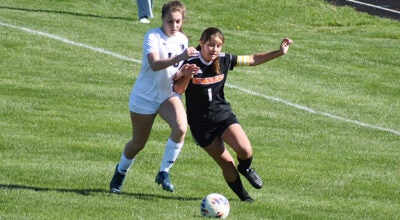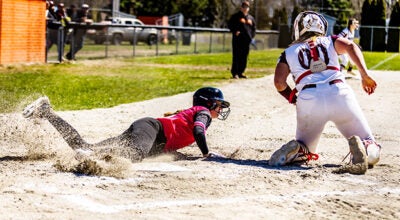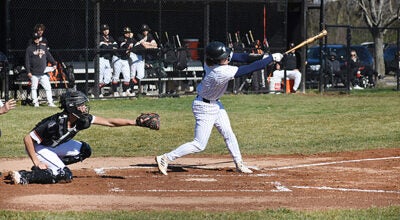John Johnson: The history of the game
Published 8:52 am Thursday, September 10, 2009
The past couple of weeks, I’ve been blessed with the opportunity to be in a couple of historic high school settings. The first was on opening night for high school football, when our MHSAA Network crew made the trip to Southwest Michigan’s Berrien County to cover the festivities of the centennial celebration of the series between Watervliet and Coloma – two towns two miles apart on the old Red Arrow Highway.
First of all, hats off to Ken Dietz, the athletic director at Watervliet, for staging a fantastic event, and if you’ve watched the MHSAA Network coverage of the game – which is still available online at MHSAA.TV – our When We Were Young Productions crew did a job worthy of an Emmy. Players from both schools, many whom had played games in old Hayes Park, made a curtain call on the field before the game – spanning the decades all the way back into the 1930’s and 40’s. An appreciative crowd estimated between five and six thousand, more than the combined population of the two towns, stood around the field on this humid August night to engage the past and cheer on today’s youth playing the game.
The hometown Panthers of Watervliet, once nicknamed the Maroons, jumped out to a halftime lead before the Comets rallied to win in the second half – but on this night, it was a true celebration of community between these two towns intertwined by football.
The game has been played by three and four generations of family members – and there were sons, fathers, grandfathers and great-grandfathers on the field on opening night to prove it. It is now the season opener for the two schools, but it was once a staple of the celebration of Armistice Day in mid-November, played in incredible weather and field conditions, like the snowy game in 1947 where George Vollrath said you literally could not see from one yard line to the next.
The 1936 game was stopped momentarily for twin sisters crossing the playing field on bicycles, said Bill Furlan. A few years later, he met one of them and later married her. Joe Aviles remembers back in the 1960’s riding around with his teammates from Coloma and opponents from Watervliet in a Jeep, talking and laughing at the local Dairy Queen on Red Arrow Highway in Coloma just a couple of days before the game, and then playing the game literally underwater at old Hayes Park in mud so thick, that the only way you could tell the players was by the color of their helmets.
There aren’t many high school football stadiums left out there from the days when Works Projects Administration erected facilities across the state and across the country. Memorial Stadium in Port Huron, built in 1948 to seat 5,500 people, still hosts games for the two high schools in that community. Keyworth Stadium in Hamtramck, built in 1935, is reported to be the first stadium in Michigan built under the WPA program. Grand facilities: brick, mortar and steel monuments to time.
One other such facility can be found at the corner of Grover and Dewey in Owosso – Willman Field – where I watched the Owosso Trojans take on the Mason Bulldogs last week. Nearly 50 steps up the steep concrete stands to the top, where you can watch fans approach from all directions on the streets surrounding the park. Like most of these facilities, no track to further separate the stands from the field, the light poles close enough to the field to where they are padded as a precaution to protect players running out of bounds.
Before the game, Jeff Phillips, the homegrown AD at Owosso, and Gary Webster, the retired sports editor of the local newspaper, told me how Willman Field once also hosted high school baseball games, where one of our state’s top multi-sport athletes of all time – the late Brad Van Pelt – is said to have homered over the top of the football grandstands and out into the Grover-Dewey intersection – a real tape-measure shot.
My point here is this – in a world where more has probably changed in the last five years than at any other time in our lives – these opportunities to appreciate the rich history of our games should not collect dust nor be allowed to tarnish.
Part of the role of this program involves story-telling, and a respect for history. These are two things that still matter most, and they are indeed alive and well as illustrated by these moments I’ve had the chance to experience as we begin a new school year.
John Johnson is Communications Director for the Michigan High School Athletic Association.






